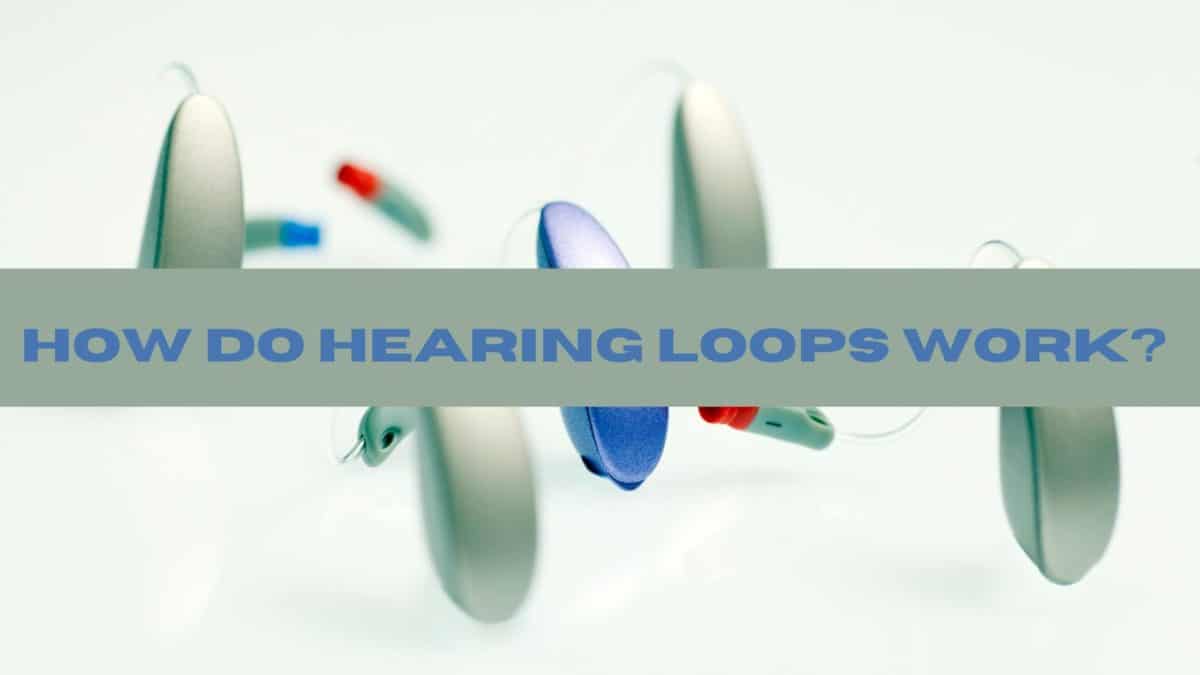0% financing available. Up to 3-year loss and damage guarantee.

How do Hearing Loops Work?
- Navigating the Conversation: The Significance of Thoughtful Disclosure in Hearing Loss - December 10, 2023
- The Sound of Dreams: Understanding How Hearing Loss Impacts Dreaming - November 7, 2023
- Traveling Effectively with Hearing Aids - October 16, 2023
Now that hearing aids have evolved so dramatically, we might be less likely to inquire about the more public assistive listening technologies available to us. The hearing aids on the market are smarter and more powerful than ever before, thanks to the computer revolution. However, hearing loops are a valuable public assistive listening technology that people remain unaware of. They connect easily with most hearing aids by simply adjusting to the telecoil setting.
But what are hearing loops, where can you find them and how do they work?
Hearing loops
Hearing loops, or audio induction loops, were invented in 1937 Britain by Joseph Poliakoff. Today’s hearing loops use the same technology, though it has evolved in efficiency and sophistication over the past century.
To a non-audiophile, hearing loops might seem like a bit of ordinary magic. In a structure or room, loops of copper cable are installed. This copper cable generates an electromagnetic field within the space. An amplification, likely a microphone, then sends a current to the copper wires. The telecoil setting on a hearing aid picks up this frequency, delivering the sound directly into the ears of the hearing aid wearer. Cochlear implants or hand-held receivers can also tune into this copper cable frequency.
Clarity and accessibility
If the hearing loop system is installed professionally according to the standards of the International Electrotechnical Commission, the sound delivery is very reliable and extremely clean, making it a gold standard in providing broader accessibility to people with difficulty hearing.
The benefits for installing hearing loops into public spaces are enormous. The sound transmission works more efficiently than the average hearing aid, because it eliminates interfering background noise.
Consider, for example, that you are attending the theater. You shelled out for decent seats, and yet you are still more than a few rows back from the stage. If you relied upon your hearing aids, you would be picking up the mic’d performers along with the coughs, rusting papers and general noise of the audience surrounding you. With a hearing loop, you are receiving the amplified sound of those speaking within the magnetic field produced by the copper coils and bypassing the irritating and disposable sounds of your fellow theater goers.
Gaining in recent popularity
Hearing loop technology has had its ups and downs since its invention. Because it relies strongly on knowledgeable and skilled installation to work properly, hearing loop availability has had a steep hill to climb in terms of becoming common practice. However, in the early days of the 21st century, a psychology professor from Michigan had a life-changing experience when he visited an 800-year old Scottish abbey. The space had been outfitted with a hearing loop, to provide accessibility to their hearing impaired visitors. The sound was so clear through his hearing aids that he became a hearing loop evangelist on the spot. Back in the United States, he began to publicly advocate for hearing loop installation in public spaces.
Where and how to find hearing loops
Today, you can find hearing loops in federal buildings, museums, municipal offices, theaters, meeting spaces and hotels. You can tell a space has been outfitted with a hearing loop by looking for a sign with an illustrated blue ear and the capital letter T, also in blue.
Hearing loops provide some hearing equity because the technology is also available to people who have not yet invested in hearing aids. People who can’t simply turn their hearing device over to the telecoil setting can borrow hand-held hearing loops from the space or business and listen to an enhanced experience via earbuds or headphones.
Become a hearing loop advocate in your community
We need to continue to collectively advocate for the inclusion of hearing loops in more public and private spaces in order to make our communities as accessible as possible to people with difficulty hearing. All it takes is a quick conversation with management or staff at your local venues and public offices to inquire as to whether hearing loops are installed. If not, lend your voice to the effort by requesting that those in charge consider its installation. Our work at building inclusive and accessible communities lives well beyond us and into the generations of tomorrow.
If you have any questions about how hearing technology can benefit you, we’re here to help! Contact us today to schedule an appointment for a hearing test.
